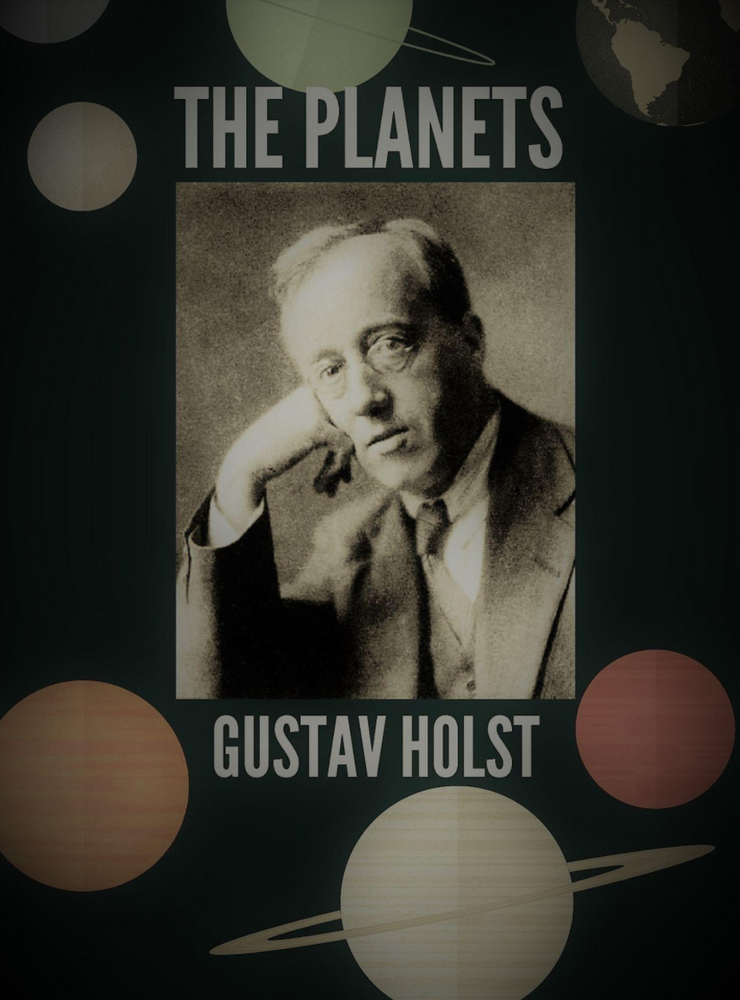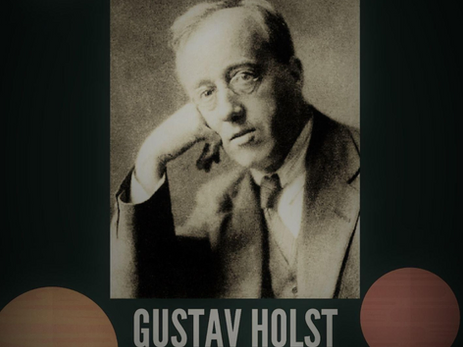Uncategorized
A trip through “The Planets” with Gustav Holst
Let’s dig a little deeper into the life of the British composer Gustav Holst, the creator of a piece that is still referenced in pop culture today.

Gustavus Theodore Von Holst was a British composer, born in Cheltenham on the 21st of September of 1874, the oldest child of his parents Adolph and Clara. Adolph Holst was a professional musician and piano teacher, he used to be the organist and choirmaster at All Saints’ Church in Cheltenham, in addition to his teaching. Clara was also a musician, as she showcased her talent as a singer and pianist. Needless to say, Gustav Holst grew up with a very musical background.
When Gustav was just eight years old, his mother Clara died from heart disease and so he and his younger brother moved in with and were looked after by their aunt, who would give Gustav piano and composition lessons.
In 1893, Holst decided it was time to leave Cheltenham, so he moved to London to attend the Royal College of Music to study composition. After graduating from college, he realised that being a composer wasn’t enough for him, so he decided to follow in his father’s footsteps and become a professional musician. He started to play the organ in London churches and also the trombone in theatres. However, in 1903 he changed his mind again, after understanding that composition was in fact his true passion. Therefore, he decided to quit playing live performances, but it was very difficult to succeed working only as a composer, the income he was making wasn’t enough so finally, he landed in James Allen’s Girls’ School in Dulwich, where he worked as a teacher for almost 20 years.
In 1914, whilst he was still actively teaching in the school, Gustav Holst began composing his most famous work: “The Planets”. This composition was said to represent all of the known planets in the Solar System that you could see from Earth at the time. It would also include his interpretation of each planets’ corresponding astrological character. Some people criticized his work because not all the planets are lined up like they actually are. Also, he skipped the Earth and Pluto -which can be argued because Pluto was discovered years after his composition was released-.
The inspiration behind his composition formed when Gustav Holst was trying to deal with his lack of income as a composer. He decided to cheer himself up by going on a trip with his friends in Spain a year before he started composing The Planets. Bax, one of his friends that travelled with him, had an interest in esoteric themes, so he introduced Holst to astrology. As a result, the composer became so devoted and passionate about the subject that he even became an enthusiastic creator of horoscopes. It was because of this trip that Holst first started thinking about creating a masterpiece that would be inspired by the planets. His composition was mainly for piano but also included orchestral instrumentation which was highly remarkable during that time. During his compositional period, Holst was suffering from tendonitis in his right arm, which made it very difficult to play whilst composing. Instead, he appointed two of his colleagues from the school to help him with the work.
This creation later became known as “The Planets”, Op. 32, or in its full lengthened title, “The Planets: Suite for Large Orchestra”. It contained seven Pieces for Large Orchestras: an orchestral suite consisting of seven short tone poems. Its first public performance was dated in 1920, and it was an instant success. Since then, the suite has been adapted for numerous instruments and instrumental combinations, including organ, synthesiser, brass band, and jazz orchestra.
It was sampled, stolen and cherished by the likes of Frank Zappa, John Williams, Hans Zimmer and many prog-rock and metal bands, with Jupiter being the most popular movement out of them all. There have been a variety of references in pop culture, from films and TV series to video games, being the Star Wars series one of the most renowned.
https://www.youtube.com/watch?v=Isic2Z2e2xs
Let’s go through these seven movements:
First Movement: Mars, the Bringer of War
This movement was meant to depict anger and was representing the Roman god of war. It’s a pulsing drum beat and the large use of ostinato give the music a military feel, whilst the tempo marking of allegro kept the tension throughout.
Second Movement: Venus, the Bringer of Peace
The music is slower and a little eerie, it is filled with relaxing melodies played by harps and flutes, strings, and even a solo violin passage to represent the Roman goddess.
Third Movement: Mercury, the Winged Messenger
Extremely fast, the lively Mercury is quick and powerful in equal measure. The high-pitched harp, flute, and glockenspiel tunes leap around all over the suite’s short duration.
Fourth Movement: Jupiter, the Bringer of Jollity
Jupiter sounds majestic with the swelling brass and slow waltzing strings.
Fifth Movement: Saturn, the Bringer of Old Age
Saturn is a shift from the positive music heard in Jupiter. The opening is slow and almost unsettling until the music expands into a heavy march. Saturn was said to be Holst’s favourite movement of the entire suite. There is a ticking theme throughout which is argued to represent the clock of life.
Sixth Movement: Uranus, the Magician
Starting with four brassy notes, Uranus shifts from heavy timpani to a gallop. The full orchestra creates power and is said to represent -in Greek mythology- the god of the sky.
Seventh Movement: Neptune, the Mystic
Holst scored this work for a piano duet, for which he used an organ to represent this planet as he believed that an instrument like the piano did not have the ability to portray a planet as mysterious as Neptune. Harp, strings and a choir is what brings this piece to life. This is the movement that uses the most dissonances.
Eighth Movement: Pluto, the Renewer
After many tries to make adaptations for the suite -including a few attempts to add Pluto as an eighth Movement- it finally came to life in 2000, by the composer and British musical critique Colin Matthews, a specialist in Holst’s work. The piece “Pluto, the Renewer”, was commissioned by the Hallé Orchestra, and dedicated posthumously to Imogen Holst, Gustav’s daughter. Matthews changed the ending of “Neptune”.
Its premiere came in Manchester on 11 May 2000, with Kent Nagano as the conductor. Matthews changed the ending of Neptune so it would segue into Pluto. “The Planets” became so popular that people are still moved by the power that it holds to this very day.
His health worsen in the last years of his life and sadly eventually passed away in 1934 at the age of 59. He had heart failure and never recovered from an operation on a duodenal ulcer. However, to carry on his legacy, Vaughan Williams conducted Holst’ music and could be the reason we still listen to it today.
Here’s the audio of “Pluto, the Renewer”
https://www.youtube.com/watch?v=N_v8G0fo4Ws
Learn all about other Famous British Composer: Edward Elgar

